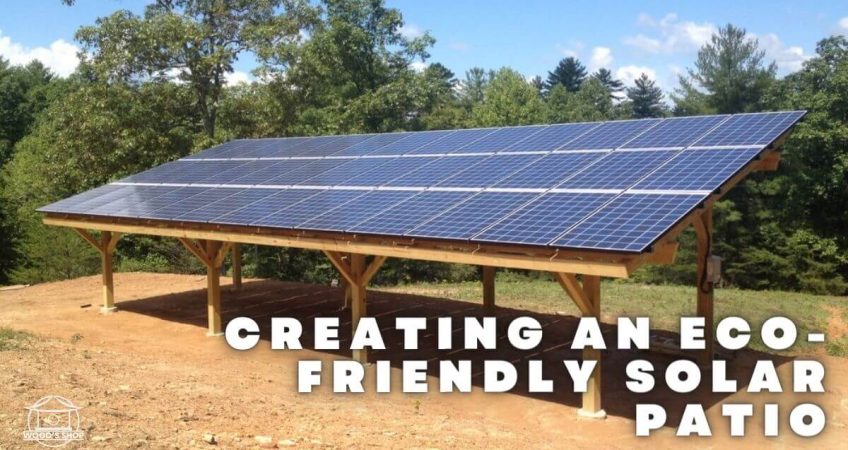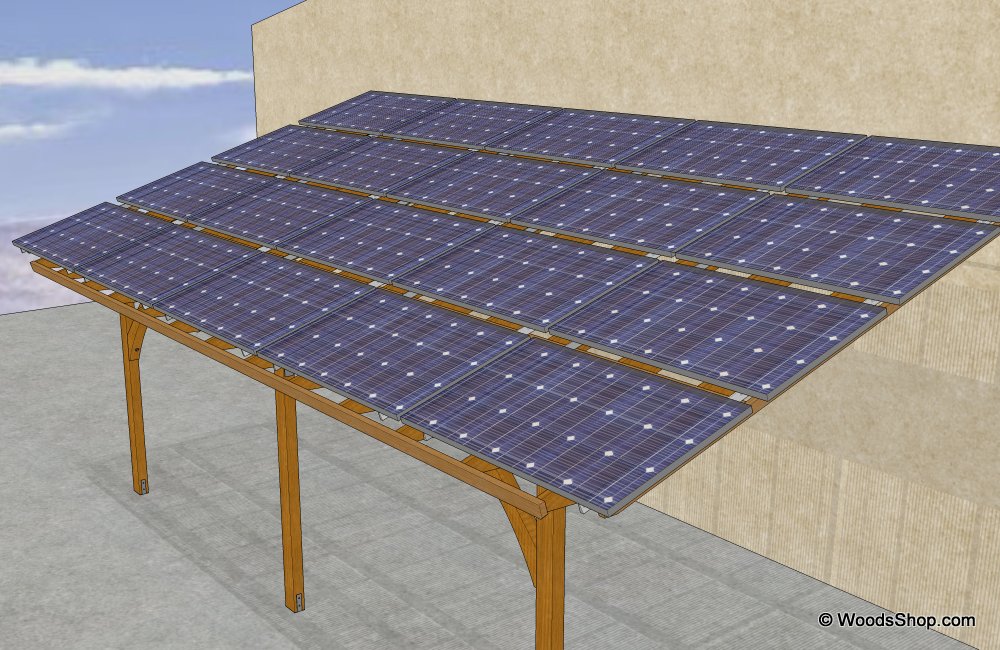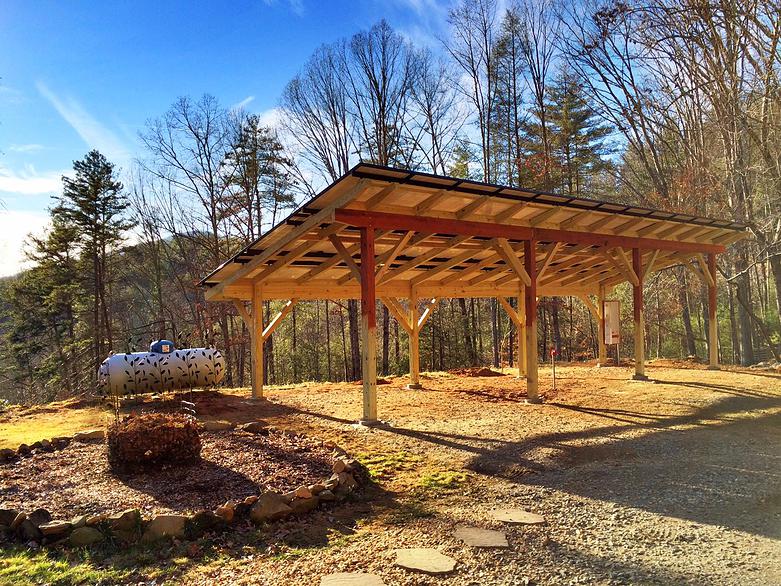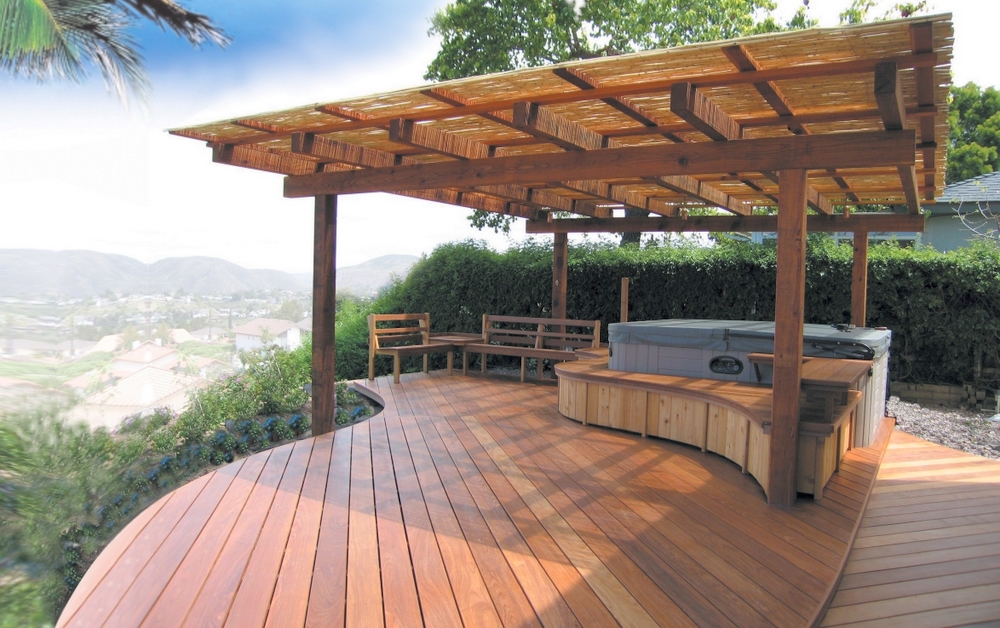Harnessing the Sun: Creating an Eco-Friendly Solar Patio

Solar patios, an innovative blend of functionality and sustainability, are fast gaining popularity in the realm of home improvements. These structures are not just aesthetically pleasing outdoor additions, but they also harness the power of the sun, therefore, paving the way for renewable energy utilization in homes. Against a backdrop of increased environmental consciousness, homeowners are increasingly drawn to such eco-friendly modifications. Solar energy, being inexhaustible and clean, offers a substantial advantage in mitigating environmental degradation, setting the stage for a sustainable future.
The Solar Patio Concept
A solar patio, a revolutionary concept, merges the utility of traditional patios with the sustainable power of solar technology. Unlike conventional patios, these modern structures are designed not just for relaxation and entertainment but also for energy production. The primary components of a solar patio include solar panels that are integrated into the patio structure and an energy storage system.
These solar panels capture sunlight and convert it into electricity, which can be used directly by the household or stored in the energy storage system for later use. This dual functionality transforms a simple patio into an environmentally friendly power generator, providing clean, renewable energy and promoting a sustainable lifestyle.
Advantages of Solar Patios
The unique blend of functionality and sustainability that solar patios offer comes with a multitude of advantages.
First and foremost, they can significantly reduce electricity bills. By harnessing the sun’s energy to generate electricity, homeowners can offset their reliance on grid energy, leading to substantial savings over time.
Secondly, solar patios help to reduce our carbon footprint. Unlike traditional energy sources that emit harmful greenhouse gases, solar energy is a clean, renewable resource that contributes to a healthier environment.
Furthermore, solar patios provide a measure of energy independence. With an energy storage system, excess power can be stored for use when sunlight is insufficient, such as during rainy days or at night.
Finally, solar patios can potentially increase property value. As sustainable home features become more desirable to home buyers, having a solar patio can be a significant selling point.
To illustrate these benefits, consider the case of the Smith family from California. After installing a solar patio, they reported a 50% reduction in their electricity bills, significant energy independence, and an increase in their property’s market value.

Planning and Design
When considering the introduction of a solar patio to your home, the initial planning stages play a crucial role in ensuring its effectiveness and aesthetic appeal. It is important to begin by assessing your household energy needs. This analysis will help determine the size and capacity of the solar panels required. Energy consumption varies depending on a multitude of factors, such as the number of electronic appliances and the overall size of the house.
Next, identifying the optimal location for installing the solar panels is imperative. The location should maximize sun exposure, generally facing the direction that receives the most sunlight throughout the day. Factors such as the angle of the panels and potential shading from surrounding structures or trees should be taken into account.
Designing an aesthetically pleasing patio is equally important. The goal is to seamlessly integrate the patio with the rest of your outdoor space. Consider incorporating elements that match your home’s existing style, while also ensuring that the solar panels do not dominate the appearance of the patio.
Working with professionals can be beneficial in navigating these considerations. They can provide expert advice and help avoid potential pitfalls. Alternatively, there are numerous online tools available that can assist you in designing your solar patio. These tools can provide realistic visualizations of the final layout, helping you to make informed decisions that align with your aesthetic desires and energy needs.
Solar Patio Components
Creating a solar patio involves the integration of several key components, each playing a crucial role in the efficiency and functionality of the structure. These components include solar panels, inverters, energy storage systems, and the patio materials and structures themselves.
Solar Panels
Solar panels, the heart of any solar patio, come in three main types: monocrystalline, polycrystalline, and thin-film. Monocrystalline panels are recognized for their efficiency and longevity but are more expensive. Polycrystalline panels, while less efficient, are more affordable. Thin-film panels, the most cost-effective, are not as efficient as the first two types and require more space. Depending on your budget, space, and energy needs, one may be more suitable than the others.
Inverters and Energy Storage Systems
The inverter is an indispensable component of a solar patio. It converts the direct current (DC) produced by the solar panels into alternating current (AC), which is used by most home appliances. Energy storage systems, often in the form of batteries, store excess solar energy for use when sunlight is insufficient. When selecting an inverter and storage system, consider factors such as capacity, lifespan, and compatibility with your solar panels.
Patio Materials and Structures
The materials and design of your solar patio structure are crucial in achieving a harmonious blend of functionality and aesthetic appeal. The patio should be sturdy enough to support the weight of the solar panels, and the design should allow for their optimal positioning and exposure to sunlight. Materials should effortlessly integrate into your outdoor landscape, complementing your home’s existing style.
Choosing the right equipment for your solar patio requires careful consideration of your specific needs and circumstances. Consulting with a solar professional can help you make informed decisions and ensure the optimal performance of your solar power system.
Read More: Explore Creative Patio Cover Ideas
Installation and Costs
The installation process of a solar patio encompasses several stages. Initially, a site assessment is performed to ensure the suitability of the location and to design the system layout. After obtaining the necessary permits, the installation team secures the racking system to your patio, which will support the solar panels. The panels are then attached, followed by the inverter and energy storage system. The final step is connecting the system to your home’s electrical panel and the grid, followed by system testing to confirm everything is working properly.
The costs associated with solar patios can vary widely based on system size, equipment quality, and installation complexity. The initial investment typically ranges from $1,000 to $5,000 for an average-sized system. However, there are numerous financing options that can alleviate this upfront cost. These may include solar loans, leasing programs, and power purchase agreements (PPAs). Moreover, government incentives such as the Federal Solar Tax Credit can offset the cost by up to 26%.
While the initial cost may seem high, the long-term financial benefits are substantial. Given the reduction in energy bills and the potential for selling excess power back to the grid, most homeowners find that their solar patio pays for itself over time. The return on investment (ROI) typically occurs within 5 to 10 years, after which you essentially enjoy free electricity. The exact timeline depends on your system’s performance, local electricity rates, and the amount of sunlight your site receives.

Maintenance and Care
Maintaining a solar patio is key to its longevity and efficiency. Regular cleaning and inspections, monitoring energy production, and handling repairs and warranties are all integral parts of this process.
Regular Cleaning and Inspections
Maintenance of your solar patio begins with regular cleaning and inspections. Use a soft brush and soapy water to gently cleanse the solar panels, ensuring they’re free from dust, bird droppings, or other debris that could obstruct sunlight and affect efficiency. Avoid using high-pressure water as it could damage the panels. A professional inspection should be scheduled annually to check the condition of the panels, inverters, and batteries, ensuring the system is in optimal working order.
Monitoring Energy Production
Closely monitoring your system’s energy production is vital to ensuring its efficiency. Most solar power systems come with monitoring software that enables you to track the energy your system produces in real time. This software can help detect any sudden drops in energy production, which could indicate a problem with the system. Regular monitoring allows for prompt troubleshooting and resolution of any issues, ensuring your solar patio continues to provide reliable power.
Handling Repairs and Warranties
Despite the robustness of solar panels, occasional repairs may be necessary due to weather conditions or technical faults. Always consult a professional when repairs are needed to avoid causing further damage or voiding your warranty. Speaking of warranties, it’s essential to understand the terms and conditions of your solar equipment warranties. These typically cover certain damages or malfunctions for a specified period. Keep a record of your warranty information and remember to lodge any valid claims within the stipulated time frame.
Solar Patio Inspiration
Exploring an array of solar patio designs and styles can spark inspiration for your own project. From minimalist contemporary designs to rustic, nature-inspired setups, there’s a solar patio for every aesthetic preference. Some homeowners opt for sleek, ground-mounted panels that seamlessly integrate into modern landscapes, while others prefer the charm of solar pergolas, creating a functional and attractive outdoor living space.
Innovative projects around the world take solar patios to the next level. For instance, some solar patios incorporate smart, adjustable panels that follow the sun’s trajectory throughout the day, maximizing energy production. Others feature integrated LED lighting for enhanced ambiance during the evening, or incorporate rainwater collection systems, demonstrating the potential for a solar patio to be a multi-functional hub for sustainability.
Visuals can be particularly illuminating when considering design options. Websites like Pinterest offer a wealth of images showcasing various solar patio installations. Architectural Digest magazines and websites also regularly feature innovative solar energy projects, showcasing the diverse ways in which solar panels can be integrated into a patio setting. As you explore these resources, consider how each design might translate to your own space, and how it could enhance both the functionality and aesthetic appeal of your outdoor area.
Read More: The Timeless Allure of Japanese Wood Design
Environmental Impact
Solar patios have a significant positive environmental impact. They offer a renewable energy solution that contributes to reducing greenhouse gas emissions, aligns with global renewable energy goals, and decreases reliance on fossil fuels.
Reduced Greenhouse Gas Emissions
One of the most significant advantages of solar patios is their potential to reduce greenhouse gas emissions. Traditional power production methods often rely on burning fossil fuels, which releases carbon dioxide and other harmful gases into the atmosphere, contributing to climate change. In contrast, solar panels produce electricity by converting sunlight into energy, a process that emits no greenhouse gases. Therefore, by opting for a solar patio, homeowners can reduce their carbon footprint and contribute to a cleaner environment.

Contribute to Renewable Energy Goals
Solar patios contribute to achieving renewable energy goals set by governments and environmental organizations worldwide. These goals aim to shift energy consumption away from non-renewable sources like coal and gas, towards sustainable, renewable sources. By installing a solar patio, homeowners are actively participating in this shift, contributing to the overall increase in renewable energy usage.
Decreased Reliance on Fossil Fuels
By harnessing the sun’s power, solar patios decrease our reliance on fossil fuels. Fossil fuels are not only a major contributor to climate change but are also a finite resource. As these resources dwindle, it becomes increasingly important to transition to renewable energy sources. Solar patios offer a viable, sustainable alternative, allowing homeowners to generate their own clean energy. This not only reduces demand for fossil fuels but also makes homeowners less susceptible to fluctuating energy prices.
Conclusion:
In conclusion, solar patios stand as a testament to innovative design, energy efficiency, and environmental responsibility. They offer homeowners a way to generate their own renewable energy while transforming their outdoor space into a functional and aesthetically pleasing living area.
From maintenance tips, monitoring energy production, and understanding repair needs, and warranties, to inspiring design ideas and the notable environmental impact, it’s evident that solar patios are a valuable addition to any home.
For those considering this sustainable upgrade, Wood’s Shop emerges as a leading solution provider. With their expertise and wide range of designs, they can help turn your vision into reality, crafting a solar patio that aligns with your aesthetic preferences and sustainability goals. Embrace the move towards renewable energy and experience the benefits of a solar patio – a step towards a cleaner, greener future.
Frequently Asked Questions
- What is the maintenance process like for solar patios?
Regular maintenance for a solar patio involves monitoring energy production, cleaning panels, and occasionally consulting a professional for repairs. These steps ensure your solar patio continues to function optimally, providing reliable power.
- Where can I find inspiration for my solar patio design?
There are numerous resources available for solar patio design inspiration. Websites such as Pinterest showcase various solar patio installations, and magazines like Architectural Digest frequently feature innovative solar energy projects. These visuals can guide your design process and help tailor your solar patio to your aesthetic preferences.
- How do solar patios contribute to sustainability?
Solar patios provide a renewable energy solution, reducing greenhouse gas emissions, and decreasing reliance on fossil fuels. They align with global renewable energy goals, helping shift energy consumption towards more sustainable sources. By installing a solar patio, homeowners can generate their own clean energy and contribute to a greener future.